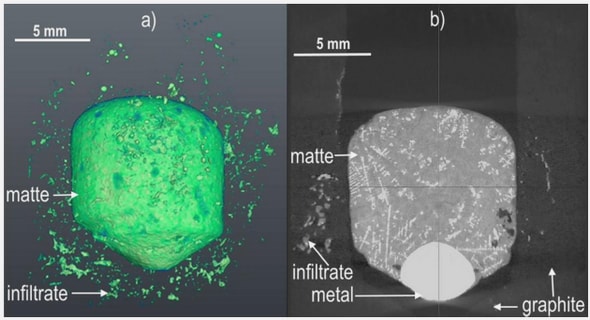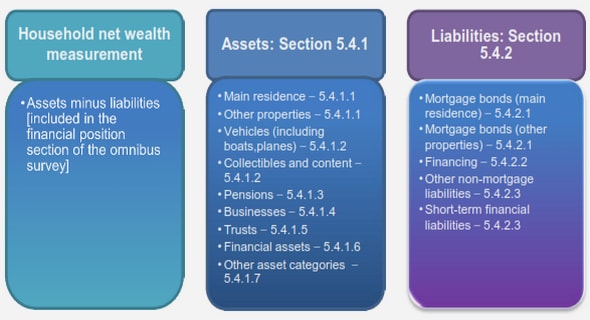Get Complete Project Material File(s) Now! »
Biological effects
It could be said that interest in the human health benefits of stilbenes arose from the year 1958, when Bronte‐Stewart 1958 publish a study in which shown that in spite the European countries had comparables amounts of dietary fat intakes, France had the lower mortality rates due to coronary heart disease (CHD). In 1979, Leger, Cochrane, and Moore (1979) described the same phenomena comparing France to other development countries such as the United Kingdom and United States.
Hepatocellular carcinoma
According to the last European Association for the Study of the Liver (EASL) Clinical Practice Guidelines (Galle et al. 2018), Hepatocellular carcinoma (HCC) is considered a global health problem that represents about 90% of primary liver cancers worldwide. Attending to the geographical distribution providded by GLOBOCAN 2018, a striking imbalance is observed, with the highest incidence rates in Asia (72.5%), followed by Europe (9.8%), Africa (7.7 %) and North America (5%), where the incidence is lower.
In last years the incidence of HCC has suffered a significant growth, standing out that new cases of HCC increased by 75% between 1990 and 2015, mainly due to changes in the populationʹs age pyramid and the demographic increase (Akinyemiju et al. 2017).
HCC treatments
The actual EASL Clinical Practice Guidelines (Galle et al. 2018), propose a modified Barcelona Clinic Liver Cancer (BCLC) staging system and treatment strategy, in which patients with HCC are classified into five stages according to pre‐established prognosis variables, and therapies are allocated according to treatment‐related status.
During the early stages of HCC, surgical approaches like local ablation, liver resection or liver transplantation, and nonsurgical approaches such as chemoembolization, are the most common treatments. However, in patients with advanced cancer‐related symptoms like macroscopic vascular invasion, lymph node involvement or metastases, other approaches are necessary. In 2007, the Food and Drug Administration (FDA) approved the use of Sorafenib (a multi‐tyrosine kinase inhibitor) in patients with advanced HCC. The great results of Sorafenib supported the searching and evaluation of other first‐line therapies as Lenvatinib, second‐line therapies as Regorafenib, Cabozantinib, Ramucirumab and immune checkpoint inhibitors as Nivolumab or Pembrolizumab (Montironi, Montal, and Llovet 2019).
Molecular mechanisms of HCC
HCC is a multistep process and the molecular basis of HCC progression may differ depending on diverse factors and a number of mechanisms might be involved (Alotaibi et al. 2016). As mentioned, in majority of cases, HCC occurs as result of cirrhosis. The cirrhotic nodules support a favorable microenvironment for the malignant transformation of hepatocytes which leads to HCC development through the successive accumulation of genetic and epigenetic changes (Alqahtani et al. 2019).
NF‐κB pathway
NF‐κB is a transcription factor that regulates innate immunity and inflammation. It has been demonstrated to play an essential role in the regulation of inflammatory signaling pathways in the liver (Xiao and Ghosh 2005) (Muriel 2009), being a critical link between inflammation and cancer (Taniguchi and Karin 2018).
NF‐κB complex is constituted by five proteins: RelA (p65), c‐Rel, RelB, NF‐κB1 (p50/p105), and NF‐κB2 (p52/p100) (Ghosh and Karin 2002). In physiological conditions, the dimmer formed by the p50 and p65 subunits rests inactive in the cytoplasm through binding to the inhibitory protein of NF‐κB (IκB) (Hoffmann and Baltimore 2006). In response to pro‐inflammatory stimuli, including inflammatory cytokines (such as TNF‐α and IL‐1β), the IκB kinase (IKK) complex phosphorylates IκB and promotes its degradation by the proteasome (Karin and Ben‐Neriah 2000; West et al. 2006). Consequently, the activated NF‐κB dimmer is released and translocates to the nucleus. There, binds specific DNA sequences, and stimulates transcription of several target genes involved in inflammation, immune responses, cell proliferation, and cell survival (Pahl 1999; Ghosh and Karin 2002).
Free radicals : ROS and RNS
Free radicals are molecules containing unpaired electrons in their orbitals, and are capable of have independent existence. They act as redox signaling molecules and they are extremely unstable and highly reactive. Cells produce two different types of redox signaling molecules: reactive oxygen species (ROS), such as the superoxide anion radical (O2−), hydrogen peroxide (H2O2), and the hydroxyl radical (•OH) and reactive nitrogen species (RNS), such as the nitric oxide radical (•NO), the nitrogen dioxide radical (•NO2), and peroxynitrite (ONOO−) (Nathan and Ding 2010).
ROS
Reactive oxygen species (ROS) are oxygen‐containing radicals that are produced by organisms as a result of normal cellular metabolism. They have an important role in physiological cell processes. Under normal physiological conditions, antioxidants are able to modulate the internal levels of ROS. However, several types of stress, as cytokines produced by chronic inflammation, leads that the ROS production overpasses the capacity to scavenge them. In such cases, they trigger detrimental modifications to lipids, proteins and DNA, leading a pathological cell process. This unbalance between oxidant and antioxidant capacity is known as “oxidative stress.”.
Plant material and reagents
Grapevine roots were kindly provided by Actichem S.A. (Montauban, France). Healthy grapevine roots, namely SO4 rootstocks (Vitis riparia ´ Vitis berlandieri), were harvested in the Saint Christoly de Blaye vineyard in the Bordeaux area of France. The roots were dried at room temperature for 2 months under conditions of no light, and then crushed in powder. Extraction was carried out using an ethanol–water mixture (85:15, v/v) under agitation at 60 °C. The ethanol was removed by evaporation in vacuo. The aqueous phase was then lyophilized, producing a brown powder. Analytical‐grade methanol, formic acid and ethyl acetate were supplied by Fisher Scientific (Waltham, MA, USA) or Sigma– Aldrich (St Louis, MO, USA). Acetonitrile for ultra–high‐ performance liquid chromatography (UPLC)–mass spectroscopy (MS) was of high‐ purity grade and purchased from Sigma–Aldrich. Deuterated solvents were purchased from Eurisotop (Saint‐Aubin, France).
Extraction and isolation procedures
The crude root extract (10 g) was partitioned with ethyl acetate (100 mL). After removal of the ethyl acetate, the precipitate (3 g) was reconstituted in water (30 mL). Column chromatography was carried out using a glass column loaded with polyamide gel. The sample solution was loaded at the top of the polyamide and eluted with 500 mL of methanol, at a flow rate of 10 mL/min; this was done eight times. The eight fractions thereby obtained were subjected to evaporation in vacuo. They were screened for the presence of stilbenes by reverse‐ phase high‐ performance liquid chromatography (HPLC) and ultra‐ performance liquid chromatography (UPLC)–MS in the negative‐ ion mode (Gabaston et al., 2017). Fraction 3 (440 mg) was found to contain five stilbene glucosides.
This fraction was rechromatographed on a semipreparative HPLC Varian Pro Star equipped with an Agilent Zorbax C18 column (7 μm, 250 ´ 25 mm) (Agilent, Santa Clara, CA, USA). The solvent programme was a gradient systemA, water with 0.1 % formic acid; B, acetonitrile with 0.1 % formic acid. The elution programme at 15 mL/min was as follows: 10 % B (0–5 min); 10–20 % B (5–10 min); 20–30 % B (10–20 min); 30–35 % B (20–25 min); 35–60 % B (25–35 min); 60–100 % B (35–45 min); and 100 % (45–50 min). Chromatograms were monitored at 280 and 306 nm. Final purification yielded resveratroloside (3 mg), resveratrol rutinoside (1 mg), piceid (4 mg), trans‐viniferin diglucoside (2 mg) and cis‐viniferin diglucoside (1 mg).
NMR and mass spectrometry
Nuclear magnetic resonance spectra were recorded on a Bruker Avance III 600 NMR spectrometer (Bruker, Billerica, MA, USA). Mass spectra were recorded by an Agilent 1290 series UHPLC apparatus connected to an Esquire LC‐ESI‐ MS/MS from Bruker Daltonics. Mass spectra were recorded in negative mode, with the capillary set at 1500 V, the end plate at – 500 V, the capillary exit at –120.4 V, dry gas at 330 °C, gas flow at 11 L/min, the nebulizer at 60 p.s.i., target mass at m/z 500, scan range from m/z 100 to 3000, helium as the collision gas, and MS/MS fragmentation amplitude at 1.0 V. An analytical C18 column (Zorbax C18, 100 ´ 2.1 mm, 1.8 μm, Agilent) was used, with a flow rate of 0.4 mL/min (solvent system: 0.1 % [v/v] formic acid [A], acetonitrile [B]). Gradient started over 0 min at 5 % B, 1.7 min at 10 % B, 3.4 min at 20 % B, 5.1 min at 30 % B, 6.8 min at 30 % B, 8.5 min at 35 % B, 11.9 min at 60 % B, 15.3 min at 100 % B and 17.0 min at 100 % B, and resulted in 17.3 min at 10% B.
Cell culture and cell viability assay
The human hepatoma cell line HepG2 was purchased from the American Type Culture Collection (Manassas, VA, USA). The HepG2 cells were cultured in Eagle’s Minimum Essential Medium (Sigma‐Aldrich) supplemented with 10 % heat‐inactivated fetal bovine serum, 2 mM L‐glutamine, 0.1 mg/mL streptomycin and 100 U/mL penicillin (Sigma‐ Aldrich). The cells were grown at 37 °C in a humidified 5 % CO2 atmosphere, with the medium replaced every 2–3 days. When the culture reached approximately 80 % confluence, the cells were detached by a solution of 0.1 % trypsin–0.04 % EDTA and harvested for use in the cell viability assays.
The HepG2 cells were seeded onto 96‐well plates (5 103 cells/well), 24 h before treatment. Solutions of stilbenes (dissolved in culture medium) were added to the wells at increasing concentrations. After at least 72 h, the viability of the cells was determined using the crystal violet assay. The assay procedure was as follows. First, the medium was removed. The cells were then washed once with phosphate‐ buffered saline (PBS), before being fixed by exposure to a 3.7 % formaldehyde solution for 15 min at room temperature. Next, the cells were washed twice with PBS, before being stained by exposure to a 0.25 % crystal violet solution (Merck, Darmstadt, Germany) for 20 min in the dark. The microplates were then washed with running water and dried at 37 °C. After the crystal violet had been dissolved by adding 150 μL of a 33 % acetic acid solution, a Synergy HT microplate reader (BioTek, Winooski, VT, USA) was used to measure absorbance at 590 nm.
Table of contents :
CHAPTER I
Abstract
1. Introduction
2. Materials and methods
2.1. Plant material and reagents
2.2. Extraction and isolation procedures
2.3. NMR and mass spectrometry
2.4. Cell culture and cell viability assay
2.5. Statistical analysis
3. Results and discussion
4. Conclusion
5. References
CHAPTER II
Abstract
1. Introduction
2. Materials and methods
2.1 Stilbene compounds
2.2 Reagents and material
2.3 Cell culture
2.4 Cytoxicity assays
2.5 Measurement of NO production
2.6 Measurement of ROS production
2.7 Measurement of TNF‐α and IL‐1β production
2.8 Statistical analysis
3. Results
4. Discussion
5. References
CHAPTER III
Abstract
1. Introduction
2. Materials and methods
2.1. Stilbenes from Vitis Vinifera
2.2. Cell Culture
2.3. Cell Viability Assay
2.4. Cell Cycle Analysis
2.5. Intracellular ROS and Mitochondrial O2− Measurement
2.6. Caspase‐3 Activity
2.7. Western Blot Analysis
2.8. Statistical Analysis
3. Results
4. Discussion
5. Conclusions
6. References
CHAPTER IV
Abstract
1. Introduction
2. Materials and methods
2.1. Reagents and antibodies
2.2. Stilbene extraction from Vitis vinifera
2.3. Cell cultures
2.4. Colony formation assay
2.5. Transwell migration assay
2.6. Transient p53 silencing in HepG2 cells
2.7. Transient p53 transfection into Hep3B cells
2.8. Western blot analysis
2.9. Lactate dehydrogenase release assay
2.10. Hydrogen peroxide measurement
2.11. Statistical analysis
3. Results
4. Discussion
5. References


